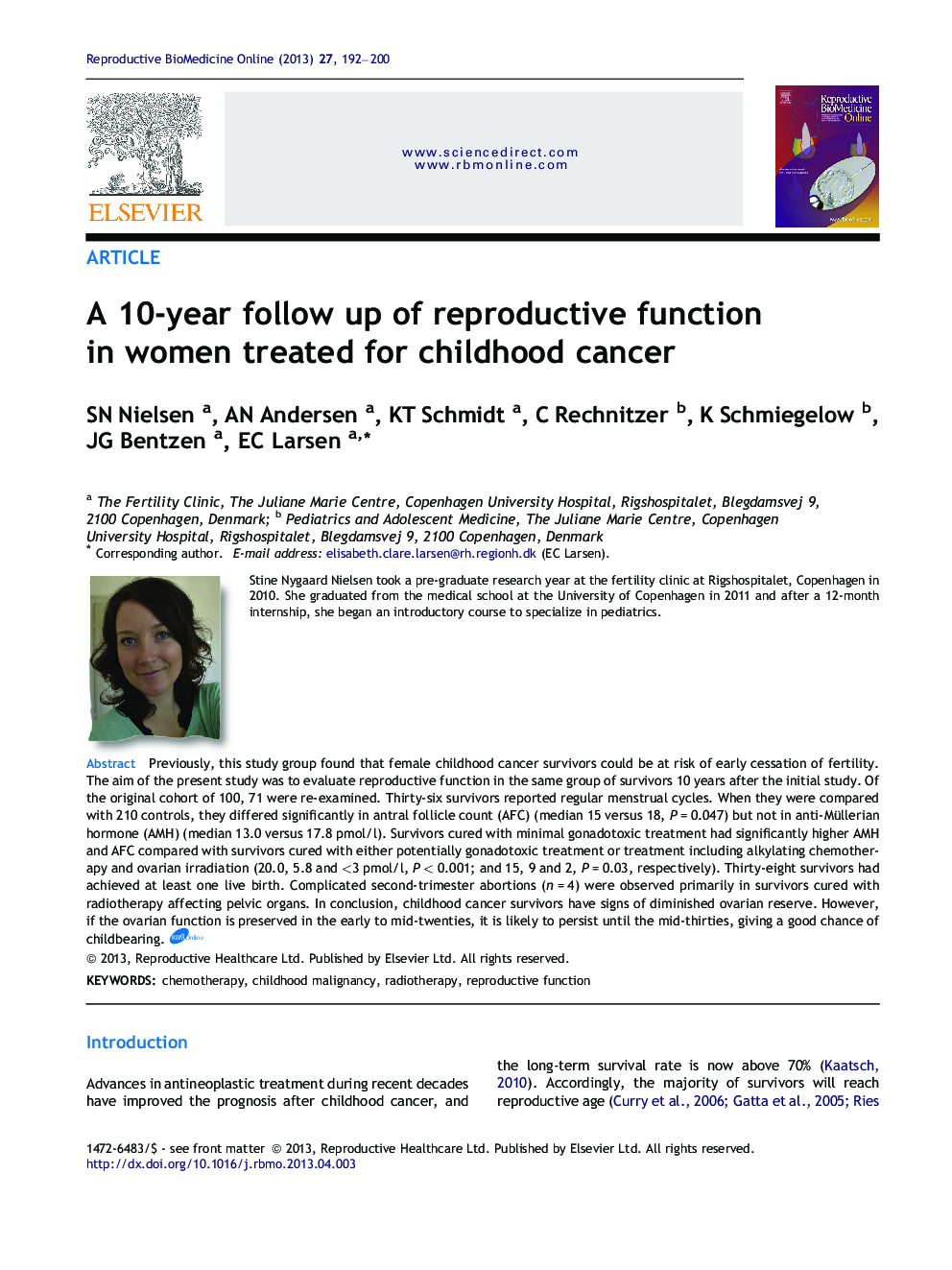| Article ID | Journal | Published Year | Pages | File Type |
|---|---|---|---|---|
| 3970316 | Reproductive BioMedicine Online | 2013 | 9 Pages |
Previously, this study group found that female childhood cancer survivors could be at risk of early cessation of fertility. The aim of the present study was to evaluate reproductive function in the same group of survivors 10 years after the initial study. Of the original cohort of 100, 71 were re-examined. Thirty-six survivors reported regular menstrual cycles. When they were compared with 210 controls, they differed significantly in antral follicle count (AFC) (median 15 versus 18, P = 0.047) but not in anti-Müllerian hormone (AMH) (median 13.0 versus 17.8 pmol/l). Survivors cured with minimal gonadotoxic treatment had significantly higher AMH and AFC compared with survivors cured with either potentially gonadotoxic treatment or treatment including alkylating chemotherapy and ovarian irradiation (20.0, 5.8 and <3 pmol/l, P < 0.001; and 15, 9 and 2, P = 0.03, respectively). Thirty-eight survivors had achieved at least one live birth. Complicated second-trimester abortions (n = 4) were observed primarily in survivors cured with radiotherapy affecting pelvic organs. In conclusion, childhood cancer survivors have signs of diminished ovarian reserve. However, if the ovarian function is preserved in the early to mid-twenties, it is likely to persist until the mid-thirties, giving a good chance of childbearing.In this 10-year follow-up study, we report the reproductive function in adult female childhood cancer survivors. A total of 71 survivors out of an original cohort of 100 were re-examined in the present study. Thirty-six (51%) survivors reported regular menstrual cycles, six (8%) had irregular cycles, 11 (15%) used oral contraceptives, 12 (17%) used hormone replacement therapy and six (8%) were pregnant. When survivors with regular menstrual cycles (n = 36) were compared with control subjects (n = 210), there were only discrete signs of diminished reproductive function in the survivors. It is important to note, however, that reproductive function was compromised in survivors who had received antineoplastic treatment harmful to the ovaries. Among the 71 participating survivors 65% have been pregnant and 69% of the pregnancies have resulted in live births. Thus, the majority of the survivors, who had an apparently normal ovarian function in their mid-twenties, have conceived and delivered, and their ovarian reserve seems almost unchanged during the follow-up period. However, it should be highlighted that complicated second-trimester abortions (n = 4) were observed primarily in survivors cured with radiotherapy affecting pelvic organs.
